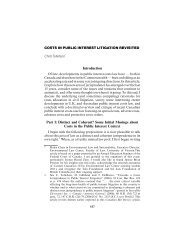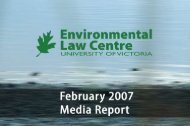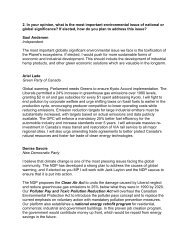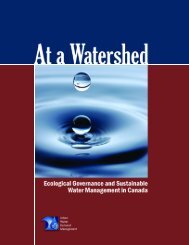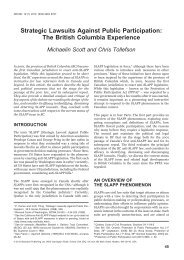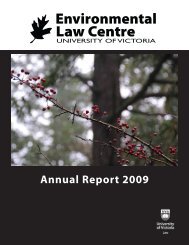Peeling back the Pavement - POLIS Water Sustainability Project
Peeling back the Pavement - POLIS Water Sustainability Project
Peeling back the Pavement - POLIS Water Sustainability Project
You also want an ePaper? Increase the reach of your titles
YUMPU automatically turns print PDFs into web optimized ePapers that Google loves.
Illustrations: L. Carnes<br />
Transitioning from a Stormwater City to a Rainwater City is possible using building practices<br />
that focus on a new kind of infrastructure that embeds a “build with nature” philosophy.<br />
Governance reform is never easy. It requires legislation, policies, programs, and most<br />
importantly attitudes and behaviour to change. For stormwater management to<br />
become rainwater management, governance reform will need to start with building<br />
practices that focus on a new kind of infrastructure that embeds a “build with<br />
nature” philosophy. Local governments already have access to some of <strong>the</strong> key tools<br />
needed to make <strong>the</strong> Rainwater City a reality. Zoning bylaws are among <strong>the</strong> most powerful<br />
tools municipalities have to regulate rainwater through land use. These bylaws<br />
can be used to determine density, as well as <strong>the</strong> location, size, and types of structures<br />
that can be built in a community. Bylaws can be used to protect riparian areas by<br />
prohibiting discharge of contaminants and preventing an increase in runoff flow.<br />
In addition to bylaws, local governments can establish green development standards<br />
that encourage or impose requirements on land-use planning to ensure<br />
rainwater is collected and reused on site. For example, <strong>the</strong> City of Chicago provides<br />
grants, waives fees, and expedites permitting processes if a green roof is included<br />
in a building plan. It also allows density bonuses (which permit <strong>the</strong> construction of<br />
more units) for plans incorporating green roofs. 19 Development approvals can also<br />
include conditions that require <strong>the</strong> provision of green housing units that have no<br />
net impact on <strong>the</strong> quality and quantity of runoff, or that use rainwater as a source<br />
for non-potable uses. Many places across Canada, including <strong>the</strong> cities of Victoria,<br />
Vancouver, Edmonton, Calgary, and Toronto, are already using some of <strong>the</strong>se approaches.<br />
It is critical to recognize that in Canada local governments already have a<br />
significant degree of autonomy to manage rainwater effectively. This means a city<br />
can choose to grow sustainably, or not.<br />
25



